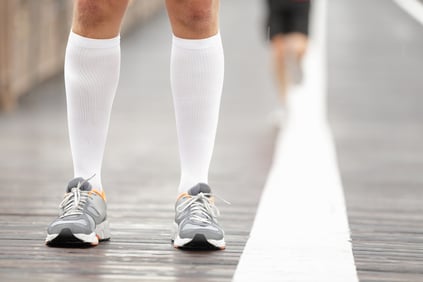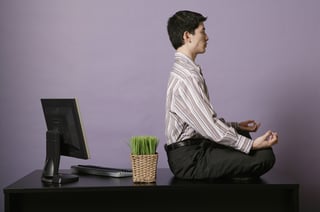 Compression stockings are used for a variety of reasons, one of which is to reduce fluid pooling within the lower extremities; and to protect against the potential for developing phlebitis and thrombosis, which can eventually lead to the formation of life-threatening blood clots (deep vein thrombosis, or DVT). Many athletes of all abilities can even be seen wearing compression sleeves and stockings, with the idea that the compression aids in athletic performance.
Compression stockings are used for a variety of reasons, one of which is to reduce fluid pooling within the lower extremities; and to protect against the potential for developing phlebitis and thrombosis, which can eventually lead to the formation of life-threatening blood clots (deep vein thrombosis, or DVT). Many athletes of all abilities can even be seen wearing compression sleeves and stockings, with the idea that the compression aids in athletic performance.
Ankle Swelling Causes and Effects
The sensation of swollen ankles is often described as a burning or itching feeling, or even as having your legs feel achy or tired. If you have leakage of fluid from your capillaries and it is not resorbed back into your bloodstream, this may result in the swelling of your ankles or feet. However, if you can increase the pressure in and around the capillaries, it is far more likely that the fluid will be resorbed back into the lymph system and naturally eliminated by the body. When there is less pooling of fluid in the legs, the result is increased blood flow in the legs back up toward the heart.
Compression stockings may also be worn following surgery to lower the risk of developing a blood clot, or for any period of time when someone is less active. A doctor may actually prescribe compression stockings if you have varicose or spider veins, or if you have just had surgery for them. Both Sigvaris and Jobst (makers of graduated compression stockings) even note the health benefit of wearing them for travel. Take this into consideration: sitting for a four-hour period or longer can increase your risk for DVT by four times, regardless of your lifestyle, age, or weight. (Here are some ideas for breaking up your sitting time.)
How to Wear Compression Stockings
Listen to your doctor’s recommendations as to how to wear your compression socks and for how long. Some general guidelines are the following:
- Put your stockings on in the morning.
- Roll the stocking down and slide it onto your foot to the heel and then roll it up the rest of the leg.
- Ensure that there are no wrinkles in the stocking after placement, and smooth out any that may have developed while you were rolling it on.
- Knee-length stockings should come up to two fingers below the bend of the knee.
- DO NOT stop wearing compression stockings before consulting with your doctor first.
Always talk to your doctor about wearing compression stockings first to ensure proper use, and be sure to report any discomfort you may have while wearing them.
Compression stockings come in a variety of strengths, ranging from light to strong pressure. Compression stockings are graduated in strength, meaning that the greatest compression is found in and around the ankle with the pressure progressively decreasing up and around the calf. The stockings also come in a variety of fun colors and styles. Trained professionals can best size and fit you based on your specific need.
For more information, talk to your healthcare professional or visit the manufacturers’ websites (Jobst and Sigvaris).


 There are things that happen on our commute that we did not plan on that put us behind on our already hectic schedules or just annoy us. It is easy to become anxious when these things happen and start or end the day with added stress from the experience. The truth is these things are typically 100% out of your control, so this should not be a source of stress.
There are things that happen on our commute that we did not plan on that put us behind on our already hectic schedules or just annoy us. It is easy to become anxious when these things happen and start or end the day with added stress from the experience. The truth is these things are typically 100% out of your control, so this should not be a source of stress. 


